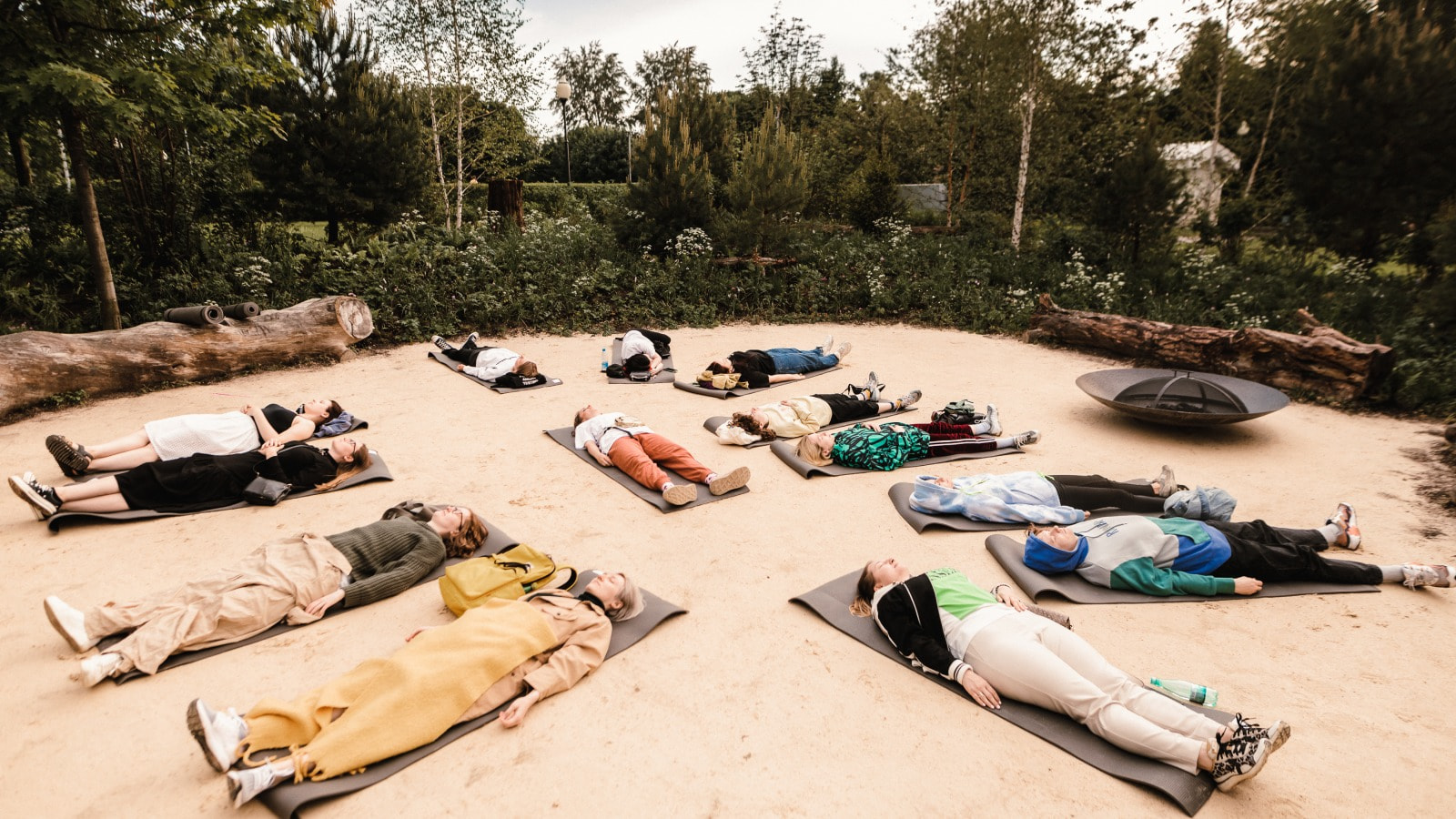Alisa Savina's Diary
My name is Alisa. I am the coordinator of the project Silence by Paweł Althamer.
This is my second project as a coordinator and my third as a mediator. I was drawn to take part in such a project for two reasons: the desire to improve my coordinator skills, since I really like to systematize and structure everything, and curiosity in terms of what form mediation would take on this project since mediation mutates with every project at Garage and with each project in general. At Silence, mediation took three forms: “classical” mediation, mediation as an artistic statement, and moderation. To varying degrees, I managed to perform all these roles.
The most interesting part of the project was the integration of Silence into Gorky Park and the clash between park visitors and visitors to the Museum. Even though the program of Garage Square Commissions has existed for years now, in my opinion, Silence is the first participatory project to question pointedly where a contemporary art museum ends and “ordinary life” begins. Each visitor encountered their own Silence: for some, it was a space for solitude, for others, a meeting place, or yet another exhibition venue to visit, or a place for meditation practices. Each new mediation session animated the place in its own way. I would like to share some of these cases.
These mediations took place in August, with the sculpture—the portrait of the project's curator Andrey Misiano—already installed. All three conversations were based around it. Two linguistic students from RUDN University on an exchange program from Africa (South Africa, I think) became interested in the sculpture. For the first time in my mediation practice on this project, the interlocutors immediately defined Silence not as a garden—but as an exhibition space, a place where an art piece is displayed. On the one hand, once the sculpture became an avid marker of the museum space, the mystery of the place seemed to have disappeared; but, on the other, it became an excuse to start a conversation. My interlocutors compared Silence with a worship site: for them, some sculptural parts resembled a votive figure in the traditions of one of the African peoples. We discussed the similarities between meditation and ancient worship, as well as the conventional view of a visit to a museum.
One day I saw a senior couple discussing something intensely: they were observing the sculpture but hesitated to enter the garden. After my invitation, a conversation began, from which I learned that they are regular Gorky Park visitors and followed the evolution of Silence with much interest from the moment it was installed. They never attended any of the meditations but knew how they pass from watching from outside. The woman shared her memories of how surprised she was when suddenly a whole islet, planted with adult plants, appeared in the park as if it had always been there. The sudden emergence of a garden with mature trees made her doubt her own memories. They began watching how the garden turned from an islet into a forest from that moment on.
One girl walked in and out of Silence several times as if she had lost something or got lost. I started talking to her and found out that she did not recognize the space without the fire bowl. I learned that she studied urbanism and assessed the space from an urbanist's perspective. We discussed how the perception of this space changes when there is a bowl in it and what the sculpture brings to it. Talking about the sculpture, the girl suggested that the portrayed person is trying to get rid of something in the past: he brushes it away, cuts it off with a broom and a scythe.
The reading groups dedicated to Althamer's practice, his visit to Moscow, and insights invoked by discussions with visitors, performers, and moderators, inspired me to discover new angles in the installation. I was delighted to receive positive feedback from visitors to the space. I am glad to have been part of this project and look forward to new incarnations of mediation in the next ones.
